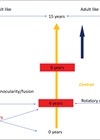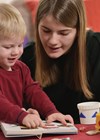Audiology features
Where Art meets Science (and earplugs): a tale of acoustics, aesthetics and audiology
For the fifth cover in the Art meets Science series, we celebrate not only the fusion of audiology and art, but also friendship, nature and the kind of collaboration that reaches far beyond the clinic walls. My colleague and dear...
OBITUARY: Remembering Thomas J Balkany 1948 - 2025
Helen Cullington, our Specialty Editor – Audiology (implantables), pays tribute to a pioneer. Back in 1996 – having worked as a cochlear implant audiologist for three years in the UK – I felt ready for a new challenge. I faxed(!)...
The art of hearing: a conversation between silence and colour
The image on the ENT & Audiology News September/October 2025 cover is not merely an artwork – it is a conversation. A conversation in colour. A dialogue between silence and sound, between science and emotion. It is part of a...
Why, and how, audiologists should measure language ability: introducing AudiCloze
A cloze test uses missing ______ to assess language ability.How can audiologists measure ______ to help assess listening difficulties? Language ability and listening difficulties While it seems like stepping onto someone else’s turf, there is a strong need for audiologists...
From technology to humanity: a conversation on person-centred hearing care
With a career that has spanned continents and disciplines – clinical audiology, cochlear implant technology and global leadership – Mei Dingxiang Feng is now leading a movement to bring person-centred care (PCC) to the forefront of hearing healthcare. In this...
Where ART meets Science: The Golden Lines of Life
Each cover in this six-part series is more than an image. It’s a window — into a different way of seeing, of hearing and of healing. Together, they form a narrative that moves across disciplines and perspectives. A story told...
Does the overuse of noise-cancelling headphones cause APD?
Have you heard the noise around APD? With a flurry of interest around noise-cancellation and APD, Dale Hewitt offers his take on the evidence and theory. When and why did this question first arise? An article was published by BBC...
Where ART meets Science: The Silence You Can Hear
Some moments have a sound you don’t hear with your ears but feel with your entire being. The artwork DS21008 (200 cm x 120 cm) captures such a moment: a Sunday morning in Maastricht, where the river Maas reflects the...
Balance and vestibular disorders in children
Discover the world of paediatric vestibular assessment and management from the team at Alder Hey Children’s Hospital, which is revolutionising services in this field. Dizziness and balance problems generate significant morbidity in children of all age groups. Vestibular disorders are...
In conversation with Sam Lear, BAA President: leading audiology forward
Dr Samantha Lear is the current British Academy of Audiology President, and Senior Audiology Policy Advisor at the National Deaf Children’s Society. With reviews ongoing in paediatric audiology in England and Scotland, Sam is ideally placed to lead the profession....
Hyperacusis and autism spectrum disorder
Several different auditory deficits have been found to be co-morbidities of ASD. This article reviews literature with respect to the relationship between hyperacusis and ASD. Autism spectrum disorder (ASD) can be characterised as a neurodevelopmental condition that is marked by...
Deafness impact on child development
Deafness can affect multiple aspects of a child’s development. This article explores these impacts and underscores the vital role audiologists play in early intervention. As an audiologist, learning and understanding the impact of deafness on a child’s development was an...

















